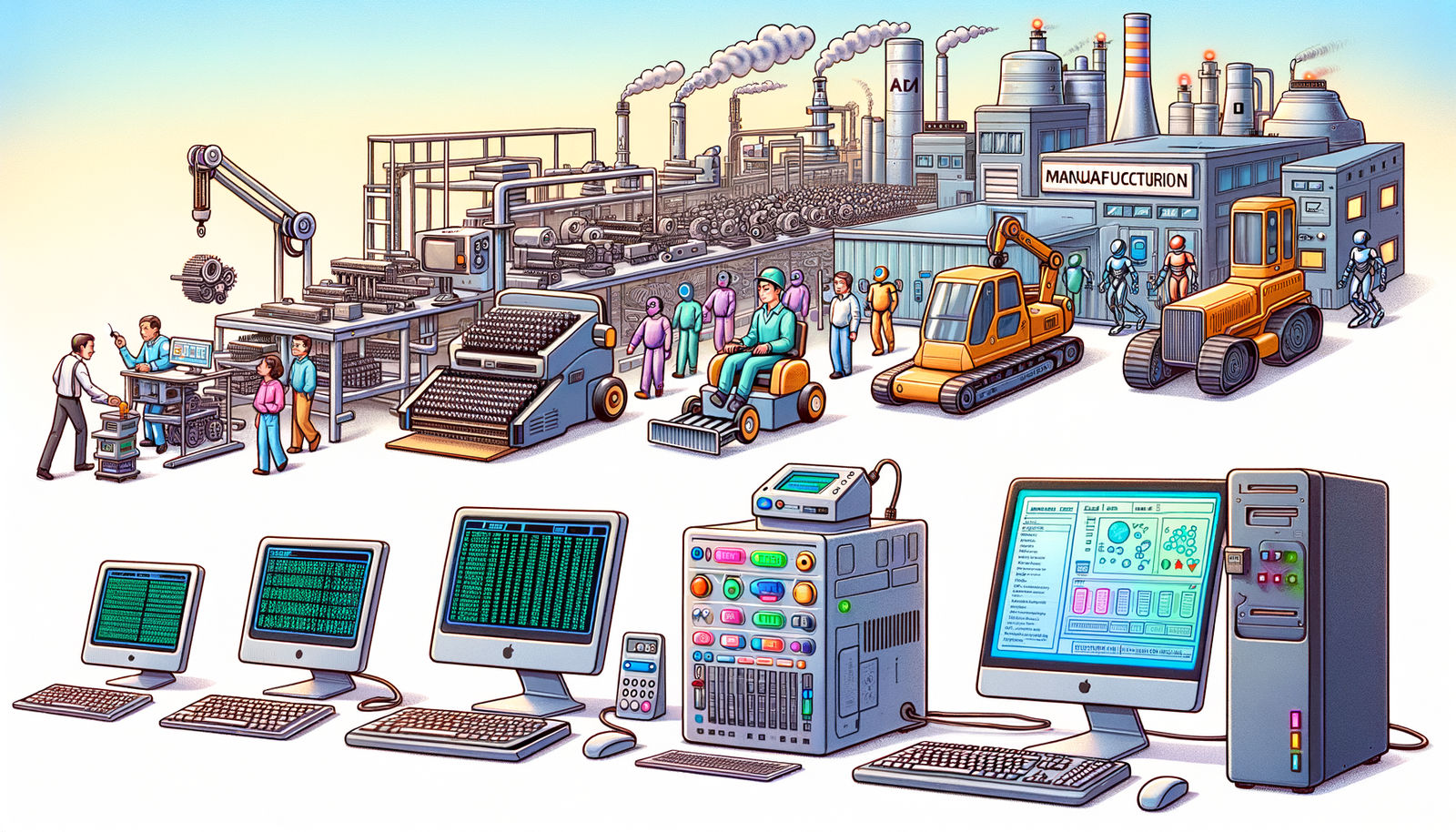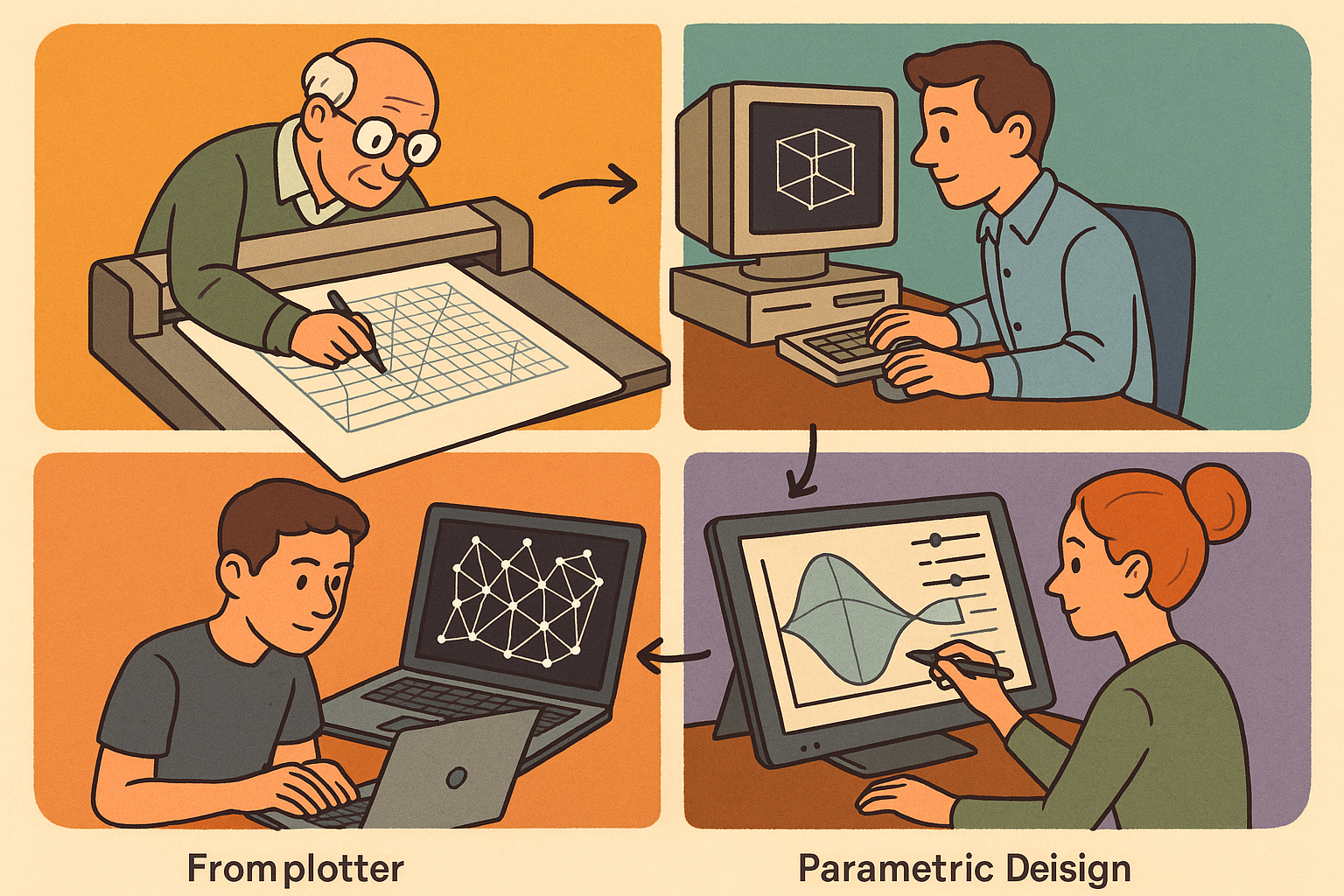Your Cart is Empty
Customer Testimonials
-
"Great customer service. The folks at Novedge were super helpful in navigating a somewhat complicated order including software upgrades and serial numbers in various stages of inactivity. They were friendly and helpful throughout the process.."
Ruben Ruckmark
"Quick & very helpful. We have been using Novedge for years and are very happy with their quick service when we need to make a purchase and excellent support resolving any issues."
Will Woodson
"Scott is the best. He reminds me about subscriptions dates, guides me in the correct direction for updates. He always responds promptly to me. He is literally the reason I continue to work with Novedge and will do so in the future."
Edward Mchugh
"Calvin Lok is “the man”. After my purchase of Sketchup 2021, he called me and provided step-by-step instructions to ease me through difficulties I was having with the setup of my new software."
Mike Borzage
Design Software History: Evolution of CAM Software: From Numerical Control to AI-Driven Manufacturing
October 31, 2024 6 min read


Introduction to CAM Software Evolution
Computer-Aided Manufacturing (CAM) software has revolutionized the manufacturing industry by enabling precise and efficient production of complex components. Serving as the critical link between design and production phases, CAM software translates digital models into machine-readable instructions that control manufacturing equipment with high accuracy. The significance of CAM in manufacturing cannot be overstated; it has drastically reduced production times, minimized errors, and allowed for the mass customization of products. Before the advent of CAM, manufacturers relied heavily on manual programming and machining processes, which were time-consuming and prone to human error. The evolution of CAM software is deeply rooted in the technological advancements of the 20th century, particularly the integration of computers into manufacturing processes.
The journey towards CAM began with early manufacturing technologies such as Numerical Control (NC) machines in the 1940s and 1950s, developed to meet the demands of producing intricate parts during World War II. The introduction of Computer Numerical Control (CNC) systems in the 1960s marked a significant leap, as computers began to directly control machine tools, enhancing precision and repeatability. This integration set the stage for the development of sophisticated CAM software. Key developments that prompted the need for CAM included increasing product complexity, the demand for higher precision, and the necessity to reduce production lead times. As products became more intricate and customized, the limitations of manual programming became apparent. Manufacturers needed a way to efficiently produce complex geometries and streamline the production process, leading to the adoption of CAM software as a vital tool in modern manufacturing operations.
Foundational Technologies in CAM Development
The development of CAM software is deeply intertwined with the evolution of Computer-Aided Design (CAD) systems, leading to an integrated CAD/CAM environment that streamlines the entire design-to-production workflow. Early CAM systems emerged as extensions of CAD software, allowing engineers to not only design components but also generate the necessary instructions to manufacture them. One of the pioneers in this field was Patrick Hanratty, often referred to as the "Father of CAD/CAM". In 1957, Hanratty developed PRONTO (Program for Numerical Tooling Operations), one of the first NC programming languages, which laid the groundwork for future CAD/CAM systems. His later work on ADAM (Automated Drafting and Machining) in 1971 further solidified the integration between CAD and CAM technologies, significantly impacting how designs were translated into manufactured products.
Essential underlying technologies that facilitated CAM development include G-code and the widespread adoption of CNC systems. G-code, developed in the 1950s, is a standardized programming language that CNC machines use to interpret instructions for movements and operations. CNC systems revolutionized manufacturing by allowing for precise control of machine tools via computer programs, enhancing efficiency and accuracy. The influence of advancements in software algorithms and computational methods cannot be understated. These advancements allowed for:
- More efficient toolpath generation, optimizing the routes that cutting tools take to minimize time and wear.
- Simulation of machining processes to identify and prevent potential errors before they occur on the shop floor.
- Handling complex 3D geometries and multi-axis machining, enabling the production of intricate and precise components.
The Growth of CAM Software Capabilities
Over the decades, CAM software has expanded its functionality far beyond basic toolpath generation to include advanced features such as simulation, optimization, and real-time monitoring. Initially, CAM systems were limited to 2D profiles and simple machining operations. However, with continuous advancements, they now support complex 3D models and multi-axis machining, catering to various industries from aerospace to automotive. The evolution of CAM software capabilities can be attributed to:
- The integration of high-performance computing, allowing for complex calculations and simulations.
- Advancements in 3D modeling, which provided more detailed and accurate representations of components.
- User-friendly interfaces that made the technology accessible to a broader range of professionals.
Notable CAM software platforms have played pivotal roles in shaping the industry. Mastercam, developed by CNC Software, Inc., emerged in the 1980s and became one of the most widely used CAM solutions globally. Its versatility, comprehensive toolset, and continuous updates have made it a staple in many machine shops. SolidCAM, known for its seamless integration with SolidWorks CAD software, introduced revolutionary technologies like iMachining, which optimizes machining processes to reduce cycle times and extend tool life. These platforms, among others, have contributed significantly by:
- Offering specialized modules for different machining processes such as milling, turning, and electrical discharge machining (EDM).
- Providing simulation and verification tools to prevent errors and material waste.
- Incorporating automation features that reduce the need for manual input and minimize human errors.
Current Trends and Future Directions in CAM Software
The integration of Artificial Intelligence (AI) and Machine Learning into CAM software represents a significant shift towards more intelligent and autonomous manufacturing systems. AI algorithms can analyze vast amounts of machining data to optimize toolpaths, predict tool wear, and adjust machining parameters in real-time, leading to improved efficiency and reduced downtime. Machine learning enables systems to learn from past operations, improving future performance and adapting to new challenges without explicit programming.
The rise of cloud-based CAM solutions has further transformed the manufacturing landscape. Cloud CAM offers several advantages:
- Accessibility: Engineers and machinists can access CAM software from any location with internet connectivity, facilitating remote work and collaboration.
- Scalability: Cloud solutions can scale resources up or down based on demand, ensuring optimal performance without significant investment in hardware.
- Cost-effectiveness: Subscription-based models reduce upfront costs and allow for predictable budgeting.
The concepts of Industry 4.0 and digital transformation are driving innovations in CAM software by promoting increased connectivity and automation in manufacturing. CAM systems are becoming more integrated with other digital tools and platforms, facilitating seamless communication between design, planning, and production. This integration enables real-time data exchange, allowing for dynamic adjustments in manufacturing processes in response to changing conditions. For example, sensors on CNC machines can feed data back to CAM software to adjust tool paths on-the-fly, improving efficiency and reducing errors. The push towards digital twins—virtual replicas of physical systems—relies heavily on advanced CAM software capable of simulating and optimizing manufacturing processes before physical production begins.
Conclusion
The evolution of CAM software represents a remarkable journey from simple code generators to sophisticated platforms that drive modern manufacturing. Significant milestones such as the development of CNC systems, the integration of CAD and CAM, and the incorporation of AI and cloud computing have collectively transformed how products are manufactured. CAM software has not only enhanced efficiency and precision but has also enabled manufacturers to meet the growing demand for complex, customized products.
The importance of ongoing development in CAM technology lies in its ability to address the ever-increasing challenges of modern manufacturing. As products become more intricate and the market demands faster turnaround times, CAM software must continue to evolve. Enhancements in automation, optimization, and integration with other systems will be vital in maintaining competitiveness. Manufacturers that leverage the latest CAM technologies stand to benefit from increased productivity, reduced costs, and improved product quality.
Looking to the future, emerging technologies such as additive manufacturing (3D printing), enhanced AI capabilities, and the Internet of Things (IoT) will shape the next generation of CAM software. These technologies will enable even greater levels of customization, efficiency, and connectivity. For instance, CAM software will need to accommodate hybrid manufacturing processes that combine subtractive and additive methods. The continuous advancement of CAM software is essential for driving innovation, supporting digital transformation, and meeting the evolving needs of the manufacturing industry.
Also in Design News

Design Software History: From Plotters to Procedural Intent: A Technical History of Generative and Parametric Design Software
January 04, 2026 13 min read
Read More
Semantic Meshes: Enabling Analytics-Ready Geometry for Digital Twins
January 04, 2026 12 min read
Read MoreSubscribe
Sign up to get the latest on sales, new releases and more …



